Last Updated on June 20, 2024 by Michelle
What is a spring peeper? Henry David Thoreau might have been thinking about the chorus of spring peepers he was greeted with at his New England home, after the snow had thawed in mid-April, when he wrote, “When we hear it again, it is remembered like a dream…The voice of nature is always encouraging.”
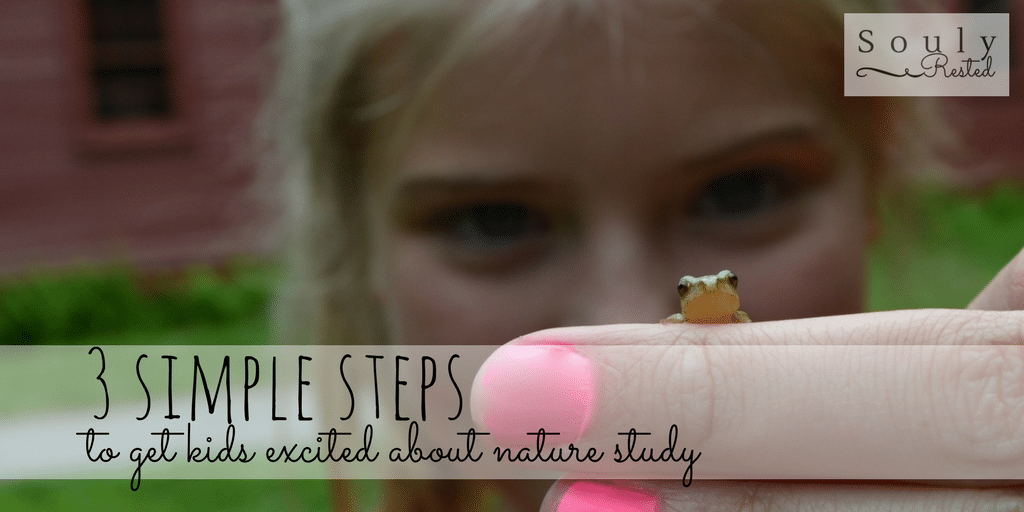 DISCLOSURE: This post contains affiliate links. ♥
DISCLOSURE: This post contains affiliate links. ♥
What is a spring peeper? To me, it’s a beautiful, much-longed-for, sign of spring.
What is a spring peeper?
A spring peeper is a small frog with a voluminous voice. Northern spring peepers live in the eastern United States up into Canada, while southern spring peepers range from Texas, to Florida, to Georgia. Somehow my whole mid-Atlantic life, before my family relocated to New England a few years ago, I never befriended these little guys or heard their beautiful melodies.
Maybe I didn’t live close enough to a marsh. (They do need access to a pond or swampy area for their tadpoles to prosper.) Maybe the sounds of traffic and suburban life drowned out their chorus. Or maybe I was just too busy to notice.
I was curious to know if indeed spring peepers live in my native state of Delaware, and in my research I stumbled across this resource of double-sided, printable ID cards about Delaware reptiles and amphibians that is too good not to share. Of course many of these creatures may live in your state too.
When we moved to our New England homestead in the spring, I kept thinking how loud and early the crickets were here. Early in the season, as well as early in the daytime, not waiting until evening to get boisterous. Then when my daughter spied an adorable little frog, and we excitedly learned about him, we discovered the true source of our serenade.
What can you do when your child discovers a new critter?
If you too find a few creatures in your yard–or at the park, or even in a parking lot at the grocery store–that you and your children would like to know more about, I have some painless suggestions to help you learn more about the creatures, use the experience to get your children almost effortlessly excited about science, and even create an amazing family heirloom in the process!
There are 3 simple steps to get kids excited about nature study.
- Learn about your backyard creatures.
- Use your discoveries to get kids excited about science.
- Create an amazing family heirloom in the process.
Don’t wait.
One thing I’ve learned the hard way over the years? Truth be told, there must be one million and twenty things I’ve learned the hard way over the years. But when it comes to my child’s education, I’d have to say that one of the most important things I’ve discovered is actually pretty simple. To encourage a love of learning, parents need to help their child investigate the topics the child is naturally curious about. WHEN they’re curious about it.
For our family, this often meant we would research a particular water bird we’d spotted at the local pond, as soon as we got home after after our walk; or use our bird ID books to figure out what bird it was that one daughter just got a picture of in the tree outside her window; or scour spider ID web sites after witnessing the coolest web builder ever on a fence near our house.
Did that mean some days math lessons never got done? Absolutely. Did it mean we often never finished a full year’s worth of mom’s plans? No doubt. But today I have four daughters who not only love learning, but also know how to learn. A few missed math lessons or a little less penmanship work was worth the sacrifice.
Learn about your backyard creatures.
For our unidentified tiny frog that spring morning many years ago, we went to this great amphibian and reptile ID site called Froglife. Once we figured out my daughter was holding a spring peeper, we researched more online and in some of our favorite ID books we keep on a handy shelf at all times. (Scroll to the bottom if you’d like to see a list of our all-time favorites.)
Then one daughter pulled up a blank Backyard Book page, inserted a picture of the spring peeper (if we don’t take our own, we copy and paste one we like from google images), and printed it out. A few others started filling in the cool info we were learning, while it was fresh in our minds, and we all had some fun frog facts to fill Dad’s head with over dinner that night. Not to mention one more page to add to our book that is hands-down one of the most treasured in our home: Our Backyard Book.
So after we completed a Backyard Book page about our cute little peeper, I finally understood that the sleigh-bell-like “cricket” crescendo I was enjoying every day was, indeed, not crickets at all.
Use their discoveries to get kids excited about science.
We also learned that the scientific name for the froggie Casanovas of our marsh is Pseudacris crucifer. As a Language-Arts-kinda-girl, I never miss a chance at word root study, so the scientific name is always the first thing listed on our Backyard Book page.
For lots of ideas about getting kids (and yourself) excited about natural science when you’re a Languare-Arts-Kinda-Girl, hop over to my article on ProverbialHomemaker.
When you break down the peeper’s Greek-and-Latin-mix of a name–Pseudacris crucifer–it makes perfect sense. If you know that pseudo means “false” and crucis means “cross,” you have a pretty good idea of what’s on the back of every spring peeper. When my daughter discovered this itty baby peeper, sure enough, we were able to identify it by its markings.



Create an amazing family heirloom in the process.
The best way, ultimately, to get kids excited about science is to show them it’s practical, fascinating, and important. Creating our Backyard Book has certainly had all those effects on our family, and more.
. . . When they go back to it months, or even years, later to remind themselves about a creepy crawly they rediscover, they realize how practical it was to document what they learned in the past.
. . . When they flip through it for fun once in a while they are fascinated anew at the amazing facts they’ve learned over the years, right in a small square footage around their home.
. . . And when they pull it out to show a friend, who ooohhhs and aaahhhs and flips through every page, they realize how esteemed and truly important their hard work is.
Of course your family doesn’t have to limit this idea to a small area around your home. You can call your nature keepsake book “our nature discoveries,” and add to it whenever you discover a critter in a playground or parking lot, take a natural science field trip, or visit their great aunt in the country.
We have sections in our Backyard Book about insects, trees, flowers, garden plants, birds, mammals, and of course amphibians.
Our family’s Backyard Book has been an heirloom in the making for almost two decades now. It’s helped improve my daughters’ penmanship, interest in Latin roots, knowledge of botany, love for science, skills for organizing, willingness to touch all things slimy, abilities in art and photography, and, most importantly, desire and love for learning.
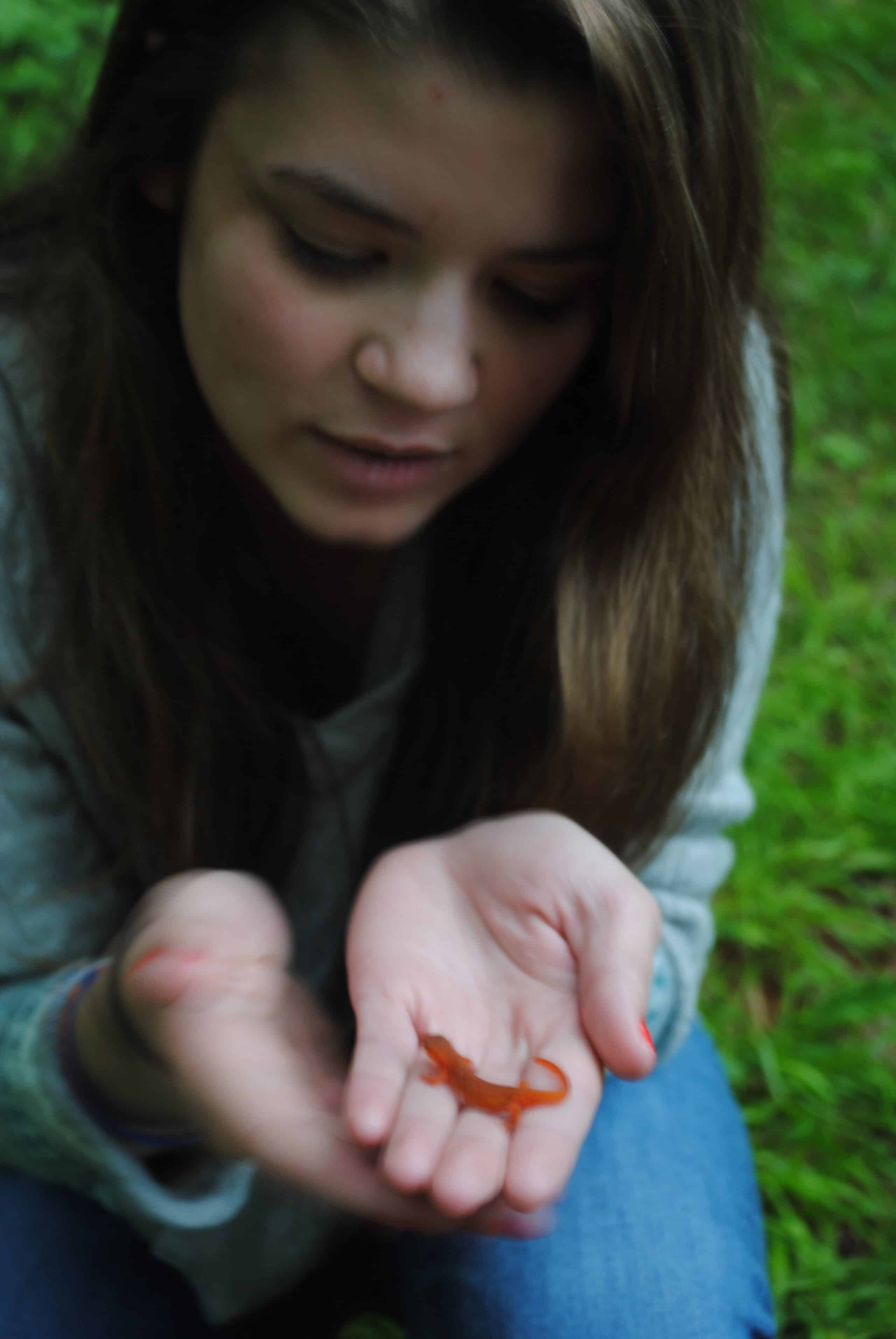
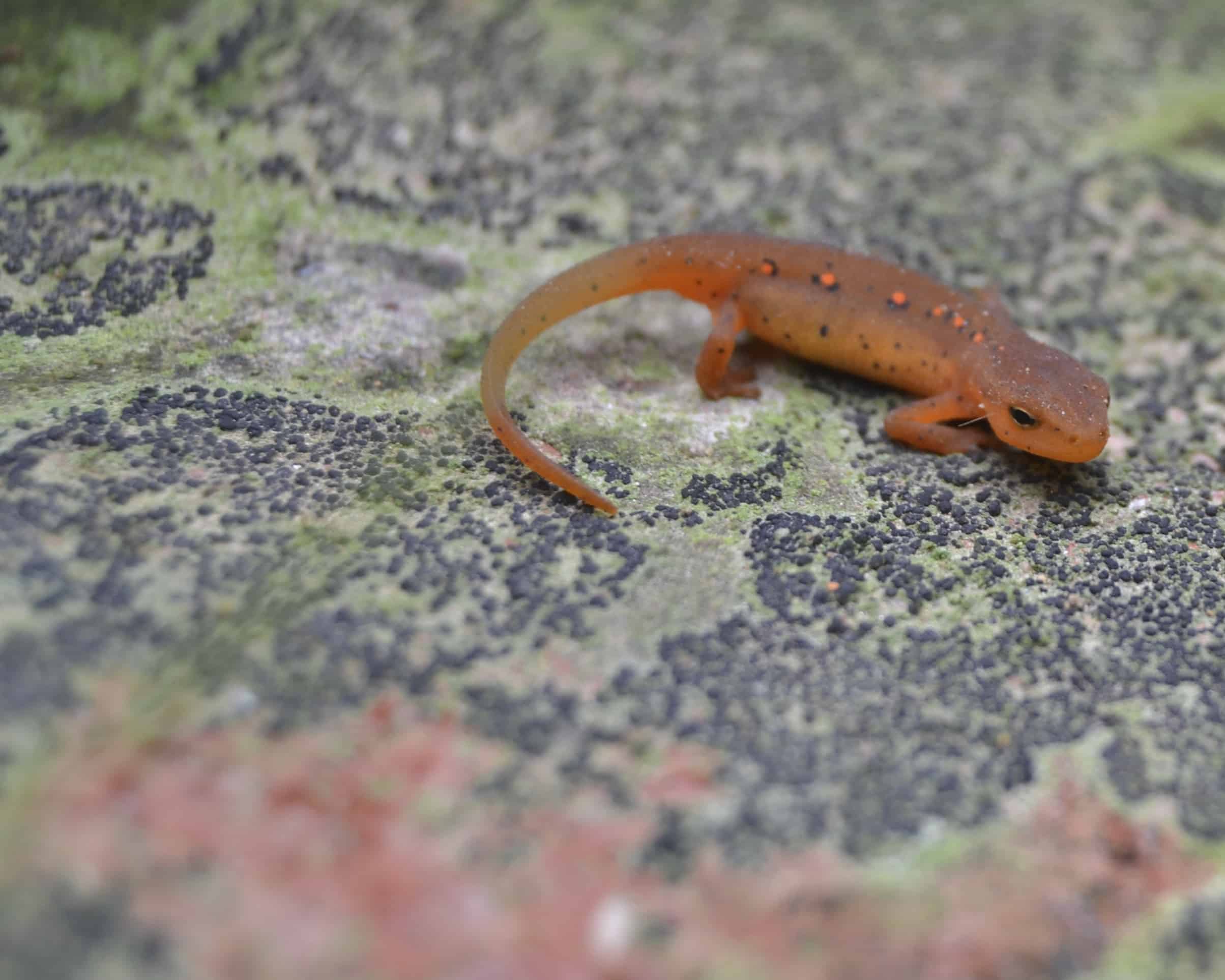
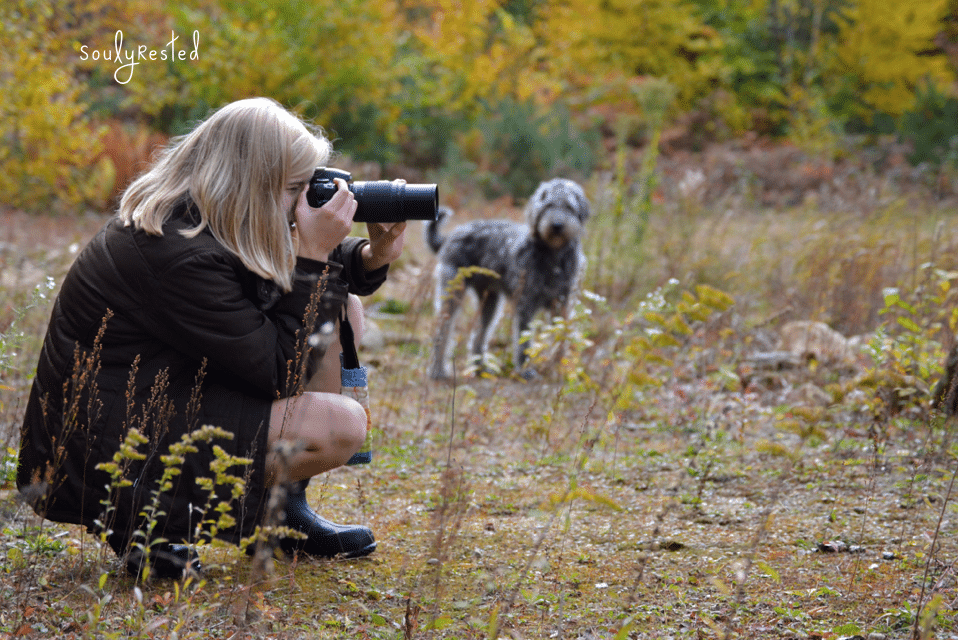


What else did we learn about spring peepers?
Along with its name-sake “x” on its back, the main identifying characteristic of a spring peeper is its song. Some say a chorus of spring peepers sounds like sleigh bells. But I think it sounds more like crickets. Plus, once our long winter finally thaws I’m elated that the frogs’ serenades are ushering in a much-welcomed spring. Needless to say, I’m not thinking about sleigh bells.
I recorded a little video about our spring peepers (click my link or see below), but you may not hear their chorus very distinctly. So you can also check out the NH state wildlife page where their song is recorded.
Like me, spring peepers probably don’t wanna think about winter any more either, since they were just almost entirely frozen during the long cold months. Turns out spring peepers can withstand a deep freeze during winter.
While most other frog species bury themselves deep under leaf cover for insulation from Jack Frost, spring peepers are one of only 5 species of frogs who face brutal winter temperatures in a different way. You see, they’re built with a natural ‘antifreeze’ in their blood. (Okay, it’s actually glucose, urea, and proteins. At least that’s what scientists think, but no one is sure how it all works… except for the frogs’ creator of course.)
Their distinguishing scientific name, the fact that they are frozen—but alive—all winter, and lots of other fascinating facts about spring peepers made it onto their page in our family’s Backyard Book. If you’d like to download and print amphibian ID pages of your own, just provide your email in the box at the end of this post. I’ve included many themed ID pages, as well as my popular ebooklet–5 Things You Should Know About Nature Study–in my subscriber library, which I am continually adding to as well. I’ll send you your personal password to the library right away, when you sign up below.
If your family decides to take on the exciting learning experience of creating your own Backyard Book, feel free to use the resources in my subscriber library, and by all means make sure to enjoy the journey because, as Thoreau pointed out, “The voice of nature is always encouraging.”
Find out why SoulyRested was considered to be one of the Top 20 Must-Read Homesteading Blogs of 2018 and then one of the Top Homesteading Blogs of 2019 as well.
I’d love to connect!
To find me in some other neck of the woods, just click any (or every!) icon below:
Our favorite Nature Study books that are on a special shelf in our home:
| | | | | |
PIN this for later! Just hover over this image for the Pinterest logo.–>
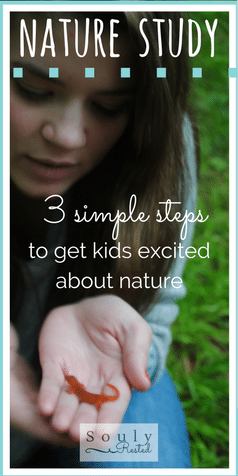
Please follow along!








I so agree with studying what the kids are interested in WHEN they’re interested! Timing is so important (and sometimes fleeting). A few weeks ago we had our front door open to enjoy the fresh air and I kept hearing a really loud noise. I finally went out and followed my ears to see what it was. I was surprised to find a tiny frog beside my water feature. I couldn’t believe something so tiny made such a huge noise! I think it was a Spring Peeper now, after reading your post. I didn’t know to look for the cross, though. So interesting!
I love the story of your tiny frog with a big voice, Michelle! Reminds me of one walk by our neighborhood pond when the girls were little. One daughter was standing at water’s edge looking intently to spot a tadpole when a giant loud croak scared her to death. She almost went head-first into the cold muddy water! Thanks for stopping by and sharing, Michelle!
What gorgeous photos! I love nature study, even though my children are all grown up.
Thank you Kathi! (And me too!)
What a cute post. The kids are braver than me, I’m not brave enough to hold a critter like that 🙂 Never seen a frog that tiny. Thank you for attending the #WednesdayAIMLinkParty. I shared your post on Facebook, Google+, Pinterest, and Twitter.
Thanks for hosting the fun party, Grammy Dee!